Why Spencer Rattler Is the Value QB with the Highest Ceiling in the 2024 NFL Draft
Why Spencer Rattler Is the Value QB with the Highest Ceiling in the 2024 NFL Draft
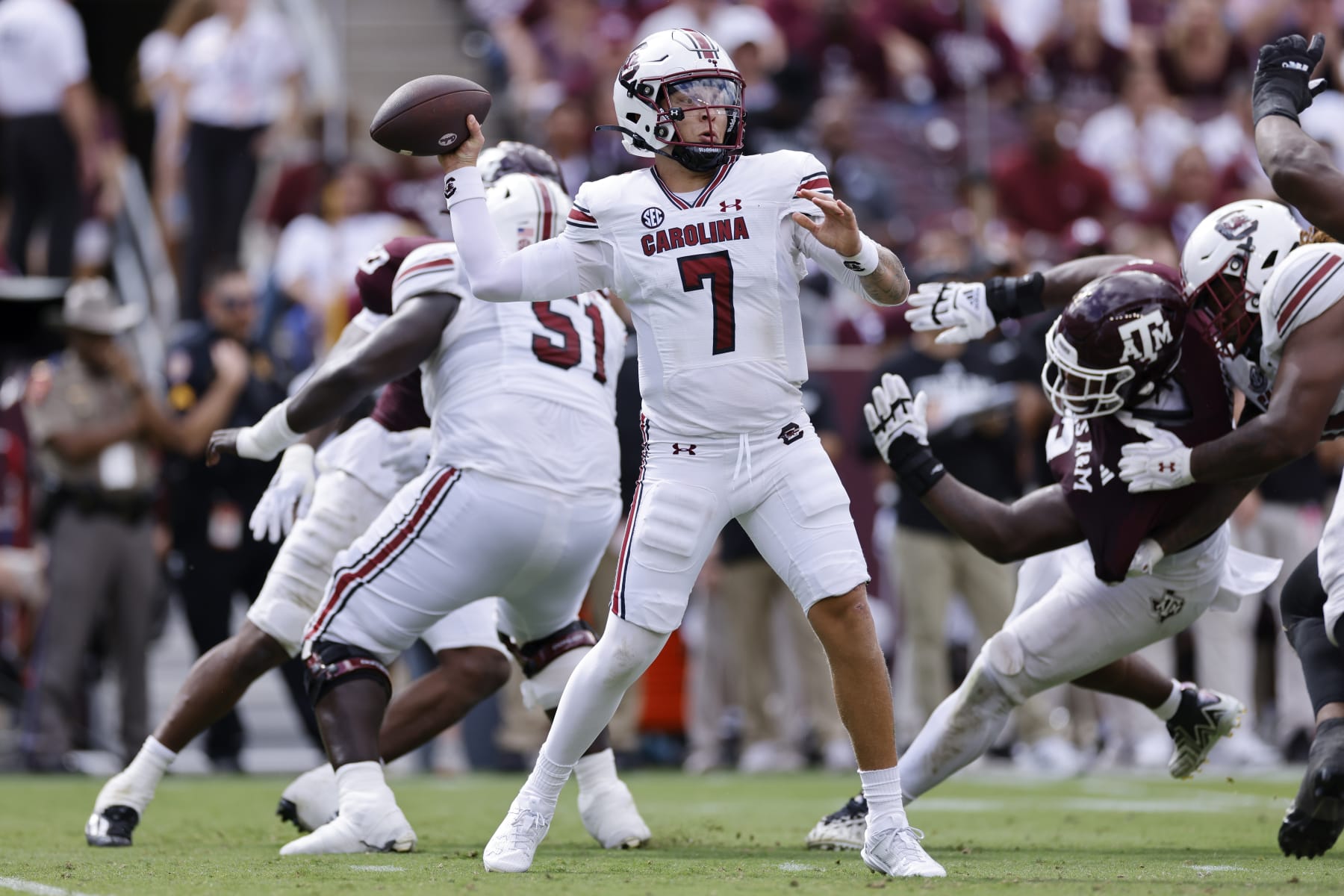
Drafting quarterbacks in the first round is a simple venture on its face. Teams are drafting with the intention of that player becoming their franchise quarterback, full stop. They are often expected to play early and blossom into one of the best dozen or so quarterbacks in the league. Anything short of that is a massive failure.
That isn't the case with quarterbacks in the middle rounds. Second-, third- and fourth-round quarterback prospects can fall into different buckets, each serving a different purpose depending on what a team needs.
In some cases, the goal is to get a high-floor prospect who can either be a serviceable starter or a very good backup right away. Others would rather take a high-risk swing on tools and pray that they can develop into something fierce.
The 2011 NFL draft is a perfect model for both modes of thinking. Andy Dalton and Colin Kaepernick went back-to-back early in the second round of that draft. Dalton became an immediate long-term starter for the Bengals, albeit one with obvious limitations. Meanwhile, Kaepernick sat for nearly two years before the 49ers embraced his unique skill set and immense talent.
Neither player became an All-Pro, but both were useful players and kind of proved their teams' philosophies to be correct.
That leads us to this year's class, where a trio of older prospects look to slot into similar roles: Oregon's Bo Nix, Washington's Michael Penix and South Carolina's Spencer Rattler. All three are completely different prospects, but come with early Day 2 expectations (if not late Round 1, in some cases).
Nix falls into the Dalton bucket, whereas Rattler is much closer to the Kaepernick bucket. Penix lies in some ambiguous territory between the two.
There's a case for all three of them to be the apple of one's eye. They each excel in different ways. Where one player excels might be useless for one team's timeline but intriguing for another's.
That's what we're aiming to sort out here. We'll walk through a handful of important traits and paint a clear picture of what type of Day 2 quarterback each of these guys are, which quarterback is the best in each "bucket" and why Rattler is the upside play in this draft.
Arm Talent
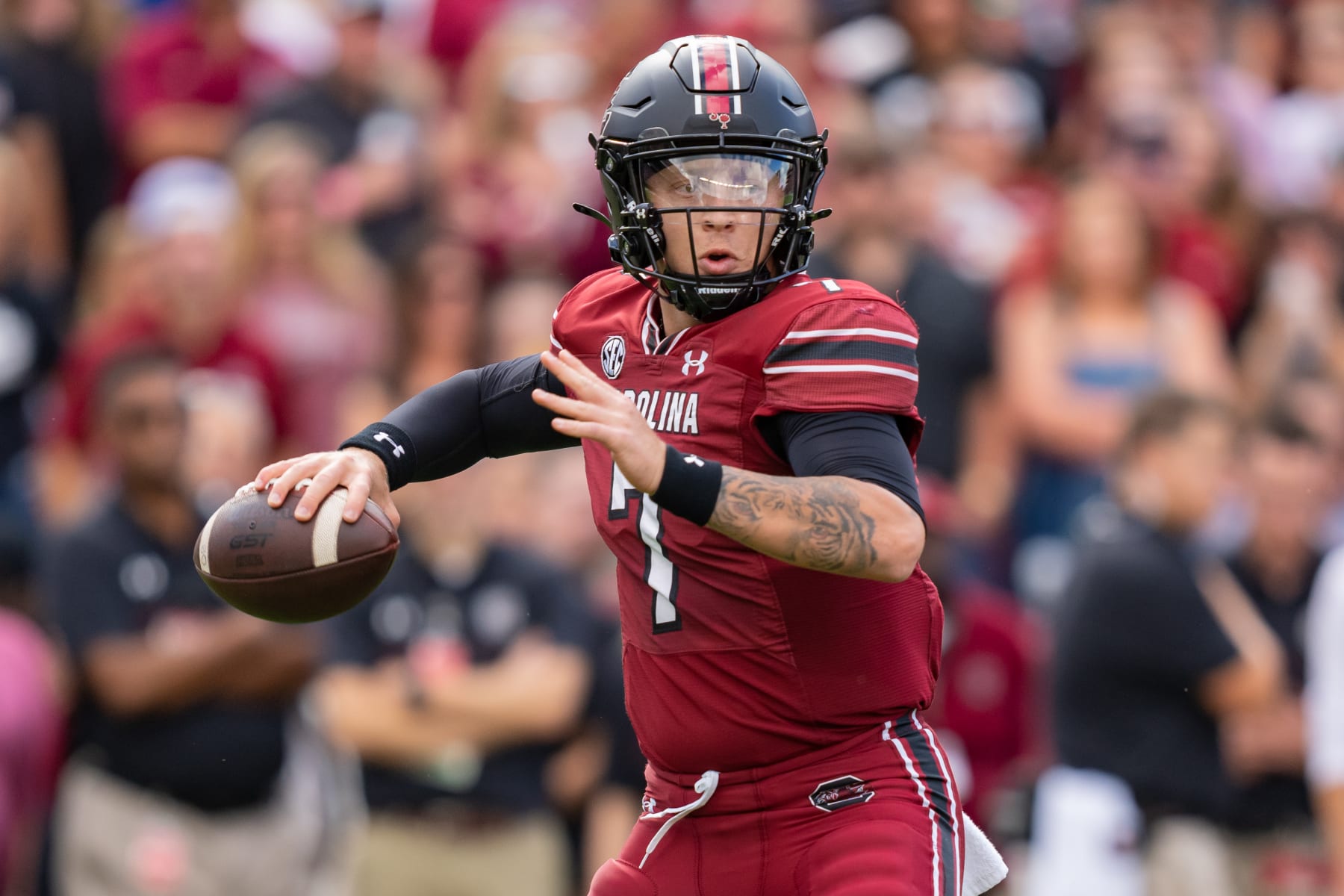
Rattler takes the cake when it comes to arm talent. It's not close. Neither Nix or Penix belong in the same conversation as Rattler in that regard.
Arm talent can mean any number of things, but the three core pillars are arm flexibility, velocity and arc control. Nix and Penix check one or two boxes, but not all three.
Nix has some arm flexibility and decent arc control to add touch on his throws, but he lacks standout velocity. Penix is the inverse. He has all the velocity and downfield range in the world, but he cannot change his arm angles or control the trajectory of his throws very well.
Rattler ticks all three boxes with ease.
Rattler has all the arm flexibility you see from Caleb Williams. The funky arm angles and unusual throwing platforms from both of them are absurd. Williams is a little more creative and brash about what he's willing to try, but Rattler can contort his arm to do whatever it needs.
There's no shortage of velocity or range with Rattler, either. Rattler can throw the laces out of the ball when he needs to. He can launch the ball 60 yards down the field on a dot just the same.
The marriage of those two skills is what makes Rattler terrifying. He can get the ball off no matter how crowded he is and still absolutely spin it. The 55-yarder Rattler threw off his back foot with a free rusher taking his head off versus Florida is all the proof in the world of that.
Finally, Rattler can control the ball. Throwing 100 mph is his standard operating speed, but he has no issue taking speed off to add some feathery touch. Rattler has every club in the bag. The consistency at which he wields those clubs is a different discussion, but he's got 'em.
Accuracy
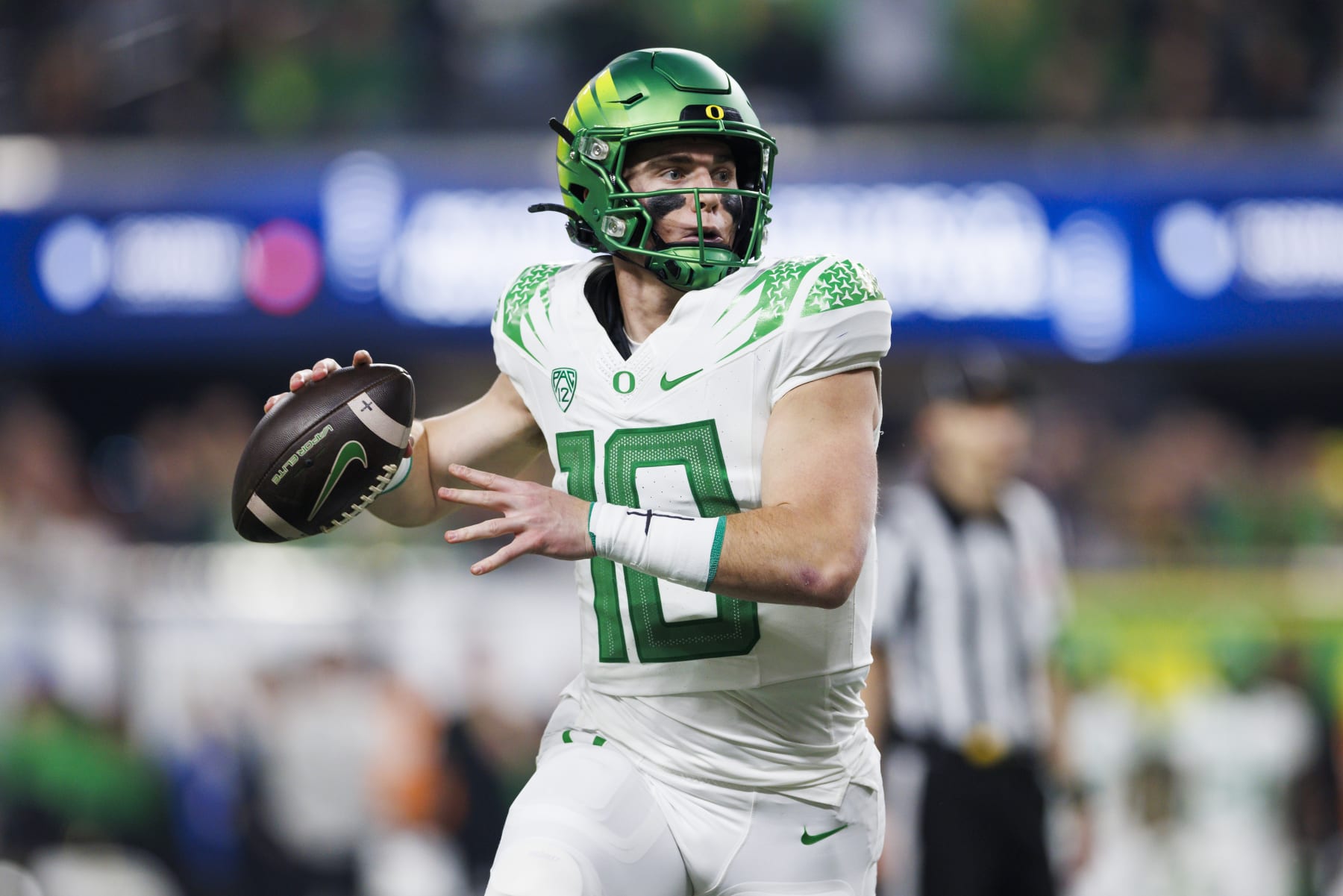
Rattler's standing in the accuracy department depends on the criteria.
Accuracy can kind of be broken down into two parts: consistency and peak ability. Rattler excels in one and struggles in the other.
In terms of consistent accuracy, Nix laps the others in this tier of quarterback prospects. He completed 77.45 percent of his passes this past season, breaking the NCAA's single-season record for completion percentage. That doesn't tell the full story with regard to Nix's accuracy, but he still fares well under further investigation.
Per my charting for Reception Perception, Nix earned a 74.9 percent adjusted accuracy score. That's the second-best mark in the class and comfortably better than both Rattler and Penix, who landed in the mid-60-percent range.
That tracks with the eye test as well. Nix may not blow you away with exceptional throws down the field or into keyhole-sized windows, but he makes the throws that are there to be made. He's a clean, consistent operator who rarely has random misfires. He has the kind of accuracy you can set your watch to.
Rattler is basically the opposite of that. On a down-to-down basis, Rattler is a mystery waiting to be unraveled. Sometimes he completely misfires for no reason at all. Plenty of his misses can be attributed to the mucky environment behind South Carolina's offensive line, but certainly not all of them.
Rattler's best throws are unreal, though. He is the only other quarterback in the class who makes the same high-end throws that Williams and Drake Maye can make—bullet throws, touch throws, drops in the bucket down the field and throws that lead receivers away from trouble. Rattler can place the ball wherever he wants to, and he has a keen understanding of where the ball needs to be in the first place.
Splitting Nix versus Rattler in this department is really just about consistency versus flash.
Pocket Management
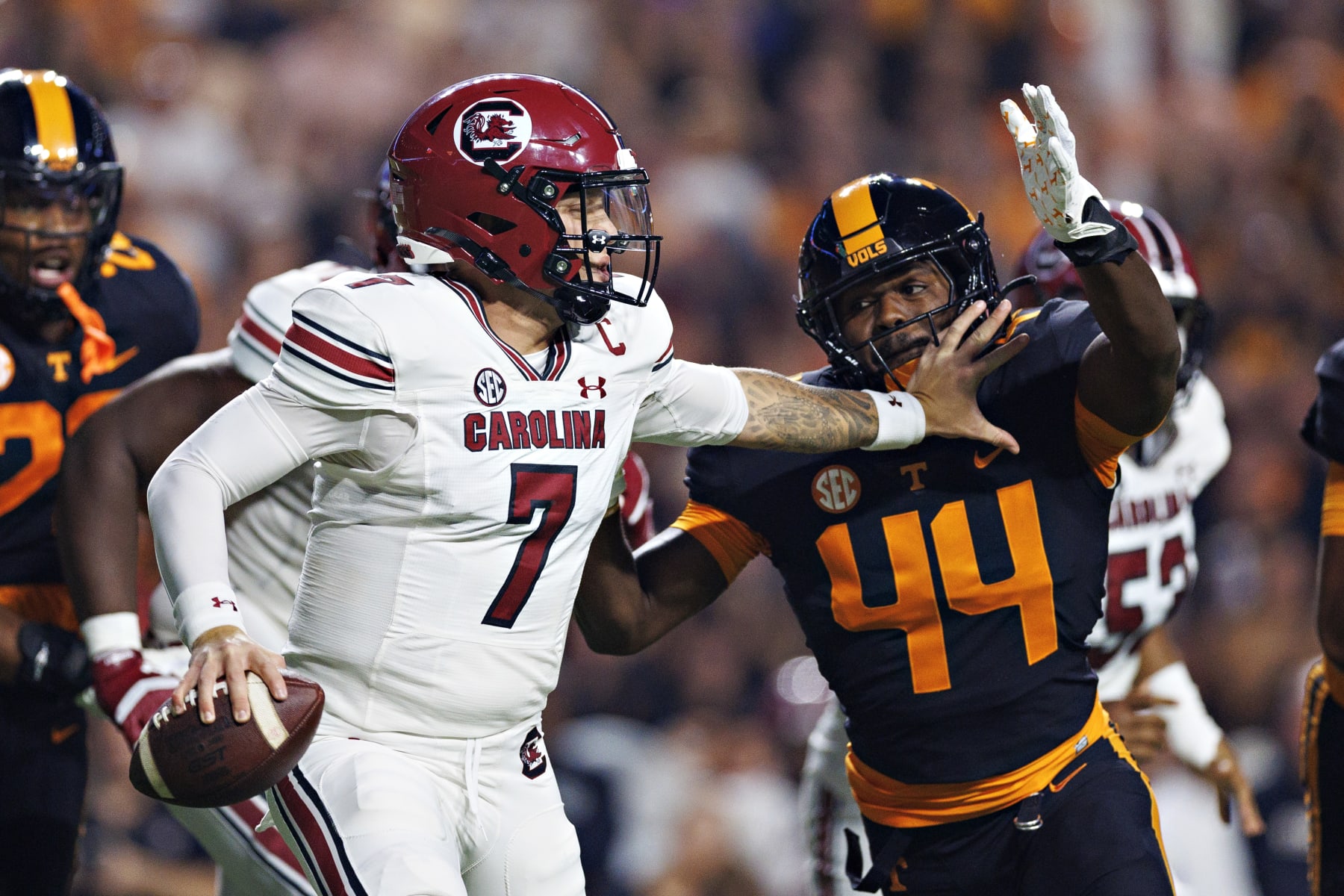
All three of Rattler, Nix and Penix have strengths and weaknesses when it comes to managing the pocket and dealing with pressure.
For Nix, the name of the game is minimizing losses. He generally gets the ball out of his hand in a hurry. He knows how to get to checkdowns and rarely holds onto the ball for the sake of it, which is something he's improved on greatly since his Auburn days.
Nix isn't going to "fix" ruined pockets or plays, though. Not very often, anyway. Nix may make one cool scramble play per game, but he's a lot more liable to take the easy way out and/or fall away from pressure as he makes throws, leading to inaccuracy.
Penix is different. He's also good at playing quickly and getting the ball out of his hands, but he's more willing to manage a pocket than Nix. Penix will hang in there a bit and move around. He'll take a shot to the ribs to get a throw off. However, Penix has almost zero creativity or off-platform throwing ability. He kind of needs space in the pocket to operate and throw cleanly.
Rattler is in a different boat entirely. He has Nix's flashes of creativity and Penix's boldness in the face of pressure, but almost to a fault in both cases. Rattler is extremely willing to hold onto the ball and take hits. Better yet, he does show impressive ability to shuffle around the pocket to buy himself time while keeping his eyes up. The problem is that Rattler is too willing to hold onto the ball, which can lead to some terrible sacks and poor decisions late in the down.
If I was drafting a backup quarterback, I'd want either Nix or Penix. There's a degree of stability and predictability to what they do, for better or worse.
If I'm drafting for upside, however, Rattler is clearly the guy in this regard. He takes the best traits of the other two and adds the best pocket movement of the three on top of that. The drawback is just that he's too aggressive, but I'd rather have to coach that out of a player than teach a more passive passer to go into attack mode.
Pre-Snap Processing
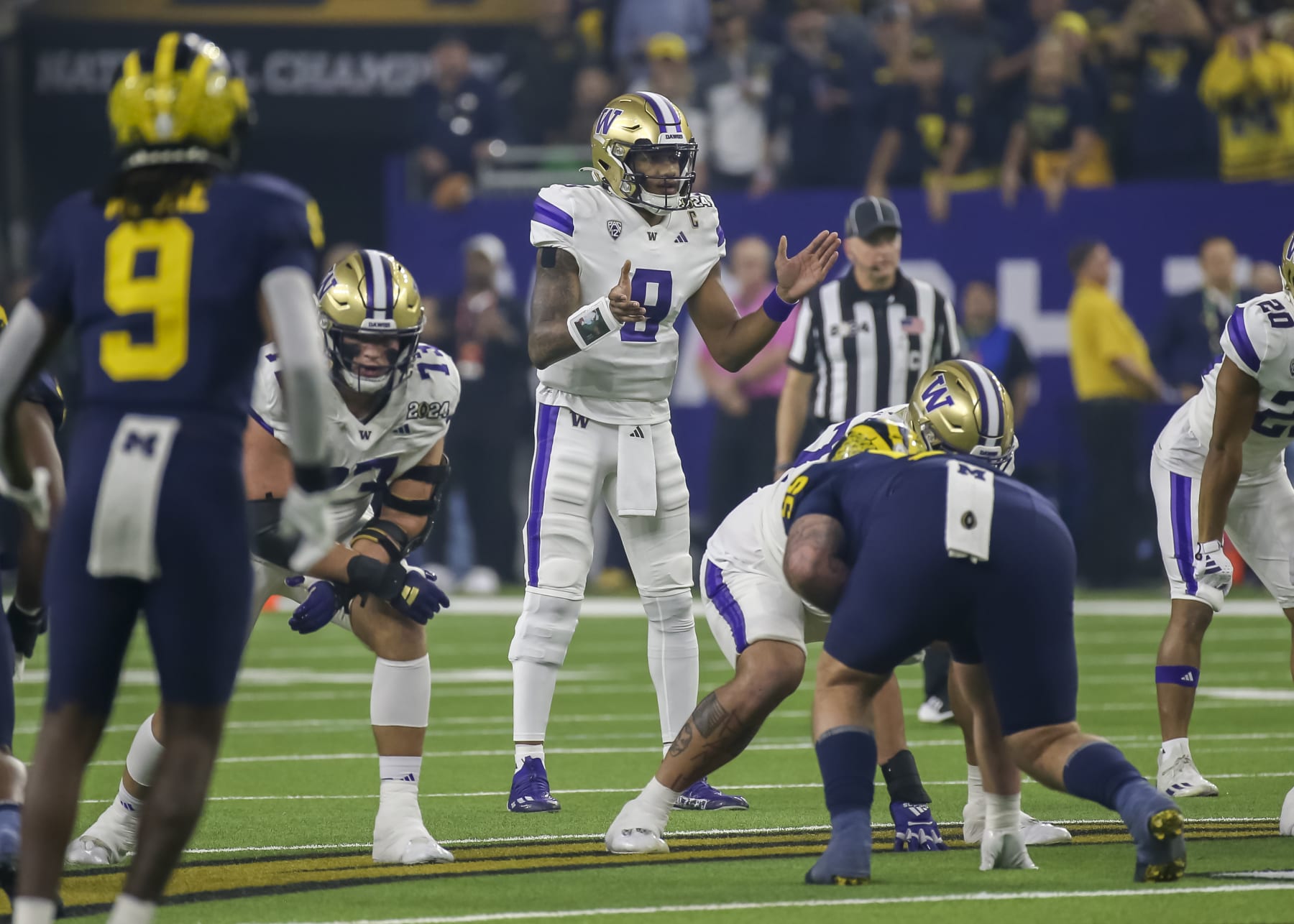
The Pac-12 quarterbacks have Rattler beat in the pre-snap processing department. Both Penix and Nix are cleaner and more reliable operators when it comes to managing potential blitzers and getting the ball out quickly.
Both Nix and Penix handle themselves before the snap as quarterbacks who have clearly seen a lot of football. With at least five years of starting play under each of their belts, they have seen every blitz, coverage rotation and alignment technique the college game has to offer. Their rolodex goes deep.
Accordingly, they have an easier time picking those things apart early in the down. Replacing a blitz or throwing with rhythm based on one defender's leverage or rushing to a checkdown is a lot easier for them than it is for younger, less experienced players.
Nix is better at wielding that power for simple gains. Penix is better at using it to throw strikes down the field right away. Either way, it's a clear tool for both of them.
Rattler does not quite have that to the same degree. That isn't to say he's totally clueless, but the consistency at which Rattler will rush the ball out to the first potential answer to a problem is lower.
There's an argument that the poor situation at South Carolina almost forced him to lean more into volatility than simple answers. The Gamecocks were always down on the scoreboard and outmatched by their opponent. Regardless, the reality is both Nix and Penix were much more reliable in that aspect of the game than Rattler ever proved to be in college.
Post-Snap Processing
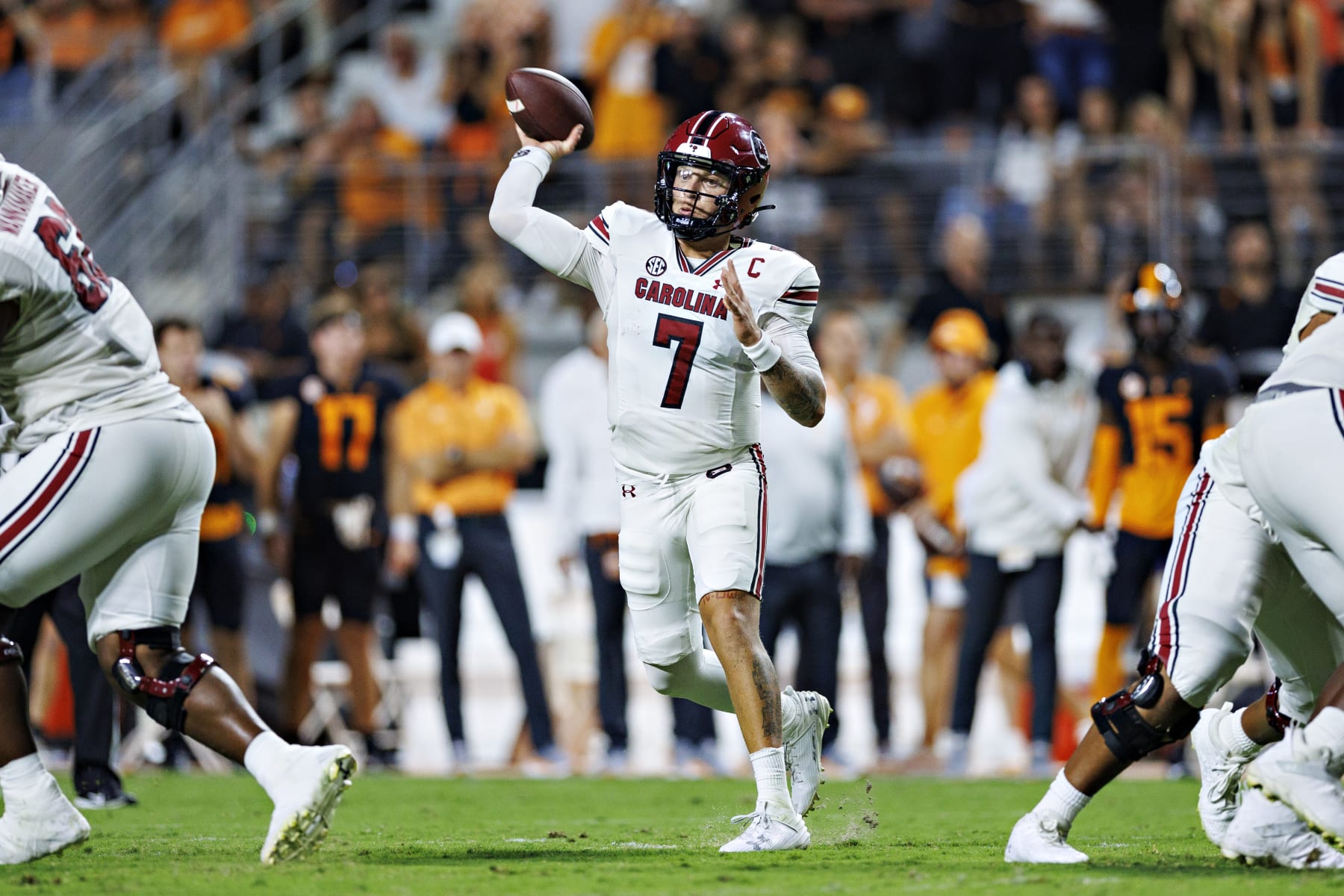
Post-snap processing is always the most nebulous aspect of quarterback play to analyze. Offenses across the spectrum are so different from one another and ask their quarterbacks to do different things, often to varying degrees of difficulty.
That's certainly the case with Nix, Penix and Rattler.
Nix was largely asked to be a distributor, and he excelled in that role. He played within the offense and made sound, simple decisions with the ball. Nix's answer to disruption late in the down was rarely to find the high-difficulty answer within the structure of the play. He instead opted for checkdowns, throwaways and scrambles. That counts for something, but you don't get a lot of NFL-like throws 10-plus yards down the field and late in the progression from Nix.
Penix and Rattler are in the opposite boat. Both of them were asked to attack down the field on full-field concepts—real-deal NFL dropback-type stuff. Rattler's offense had more elements of under center and play action, while Penix's focused more on five-out dropback concepts. Both of them got to showcase their ability to progress late in the down to downfield and backside routes.
Of the two, Rattler was slightly more impressive to me on film. Penix was obviously much more productive, but that's as much about Penix as it was his three future NFL receivers and an NFL offensive line making things easier. Rattler was often asked to make all of these high-difficulty NFL reads and throws with pressure in his face and less-than-ideal skill talent, Xavier Legette notwithstanding.
Those shaky conditions led to some bad plays from Rattler, but they also gave a clearer picture of what he can do in a real NFL environment. It's unclear if the same is true of Penix. There's more projection needed for Penix because of how easy a lot was for him, and even then, he was still relatively prone to jamming throws into closed windows because he didn't see a zone defender.
To belabor the point: Rattler's profile and best moments in this area are the most conducive to high-level play down the line. A little more fine-tuning and proper coaching—not to mention a better situation than he had at South Carolina—could go a long way to unlocking what Rattler can do.
Athleticism
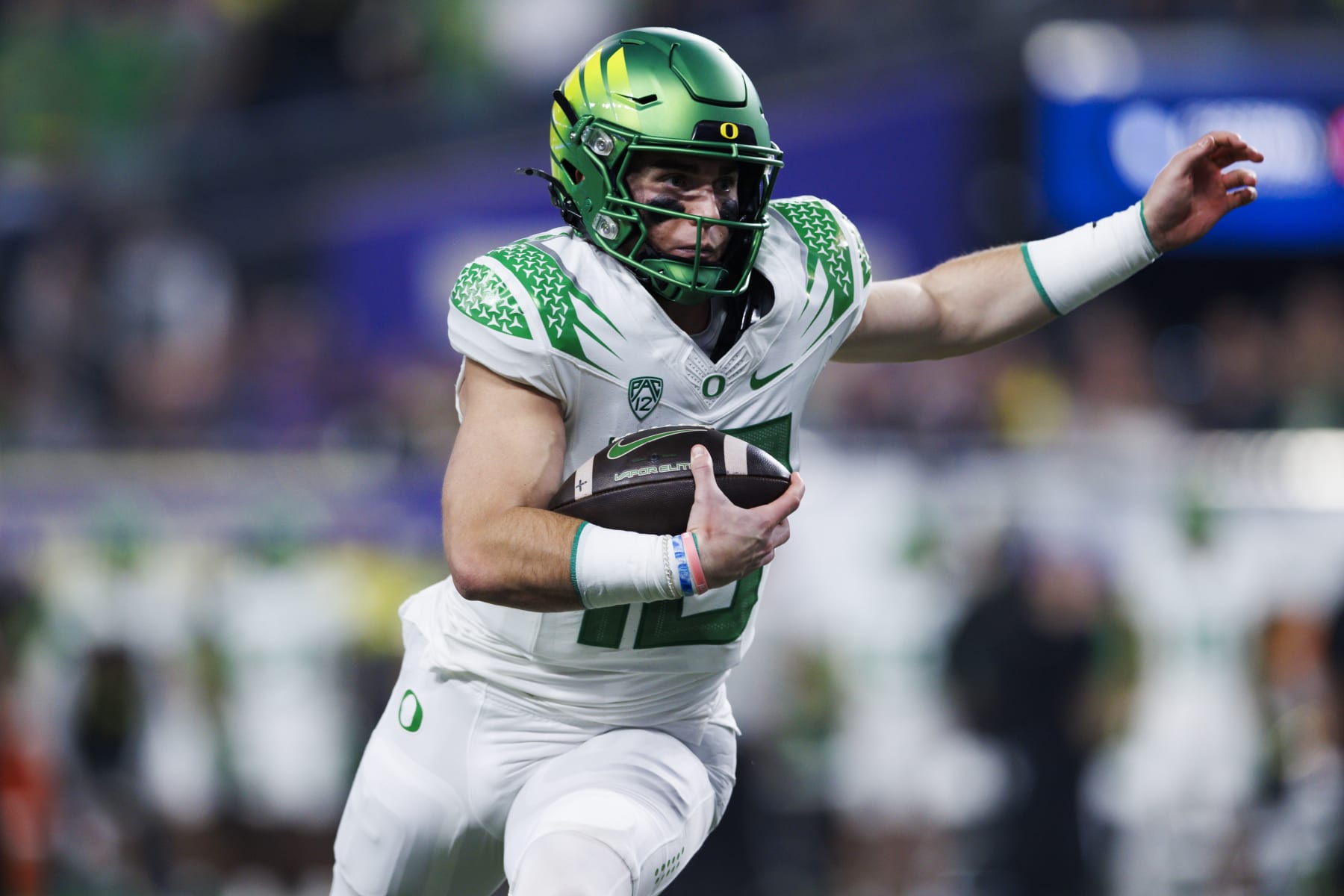
This is the one area where Rattler has no argument for winning. Neither the eye test nor the standardized athletic tests give Rattler the edge over the other two, particularly Nix.
Based on the eye test, Nix is the best athlete of the three by a country mile. He is quick, explosive and balanced. He's loose both in and around the pocket, but he has the frame and strength to brush off tacklers from time to time.
Moreover, Nix is a serious piece in the designed run game. He isn't Justin Fields, but he might be Daniel Jones. Somewhere around 400-500 rushing yards isn't out of the realm of possibilities for Nix at all. Among these three quarterbacks, he has by far the best chance of pulling that off.
By the numbers, Penix somehow takes the win. You would never guess it by watching him play with pads on, but Penix came in at just under 4.6 in the 40-yard dash at his pro day, according to scouts. Penix also hit 36.5 inches in the vertical jump and 10'5" in the broad jump, both of which are comfortably above-average figures for a quarterback.
Rattler isn't a terrible athlete, but he loses by both of these criteria. Rattler has a little bit of elusiveness to him at times, but nothing like Nix. Rattler didn't acquit himself well at the NFL Scouting Combine, either. Rattler ran a sluggish 4.95-second 40-yard dash and did not fare better than the 60th percentile in any drill.
Off-Script / Playmaking
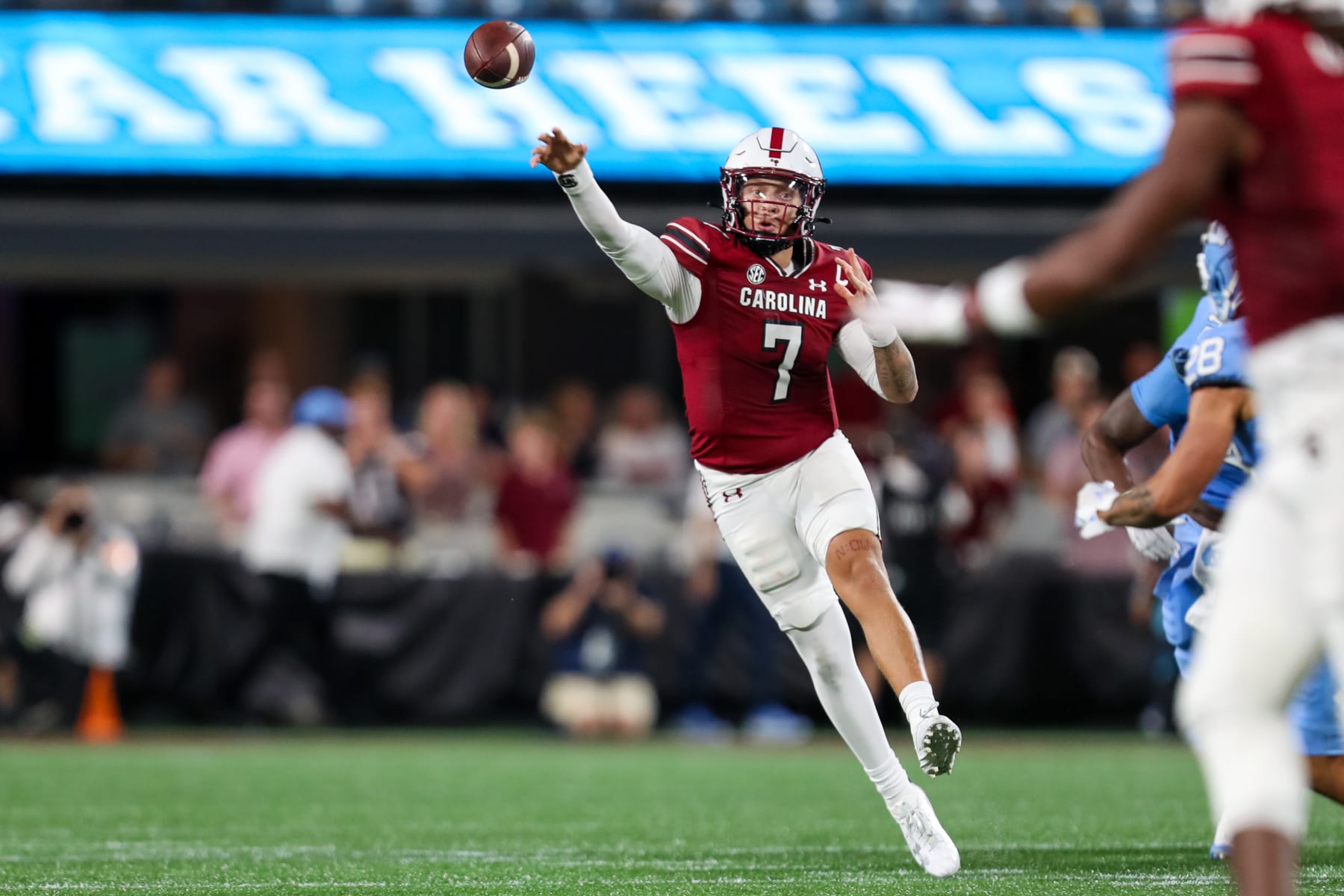
Off-script ability is another category where there's more than one right answer depending on the angle you are approaching things from.
Similar to other categories, Nix is kind of the safe option. That may seem weird to say given his scatterbrained play at Auburn, but it's true. Nix typically does well to move off his spot and find minimal gains. A six-yard scramble here, a late under-pressure checkdown there.
Nix is the type of off-script player who does a good job of getting something out of nothing, even if it's just a few yards. He will dazzle with a stroke of creativity now and again, but he mostly keeps the offense on track after a bump in the road. There's value in that.
By contrast, Rattler is a lightning rod for chaos, but he has enough of the tools to pull it off. While Rattler isn't a threatening athlete, there's enough wiggle to his game to free him from the pocket initially and buy himself time. He uses that time to survey down the field and hunt for cracks in the defense, windows that have opened up only because the structure of the play is stripped away.
Rattler isn't looking for the easy gains like Nix, or even Penix. He didn't have that luxury at South Carolina. Rattler had to be aggressive and look 20-plus yards down the field for his off-script throws. That naturally leads to some volatility, but it also leads to the exact same plays we see from Maye and Williams that make them special prospects. They're the exact same plays all of the league's best quarterbacks make in clutch situations.
For a backup quarterback and spot starter, Nix's skill set is more valuable. For a sit-and-develop style of prospect, Rattler's skill set has the outline of a game-changing quarterback. Teams that are trying to make a serious upgrade at the position should gamble on the latter.
Final
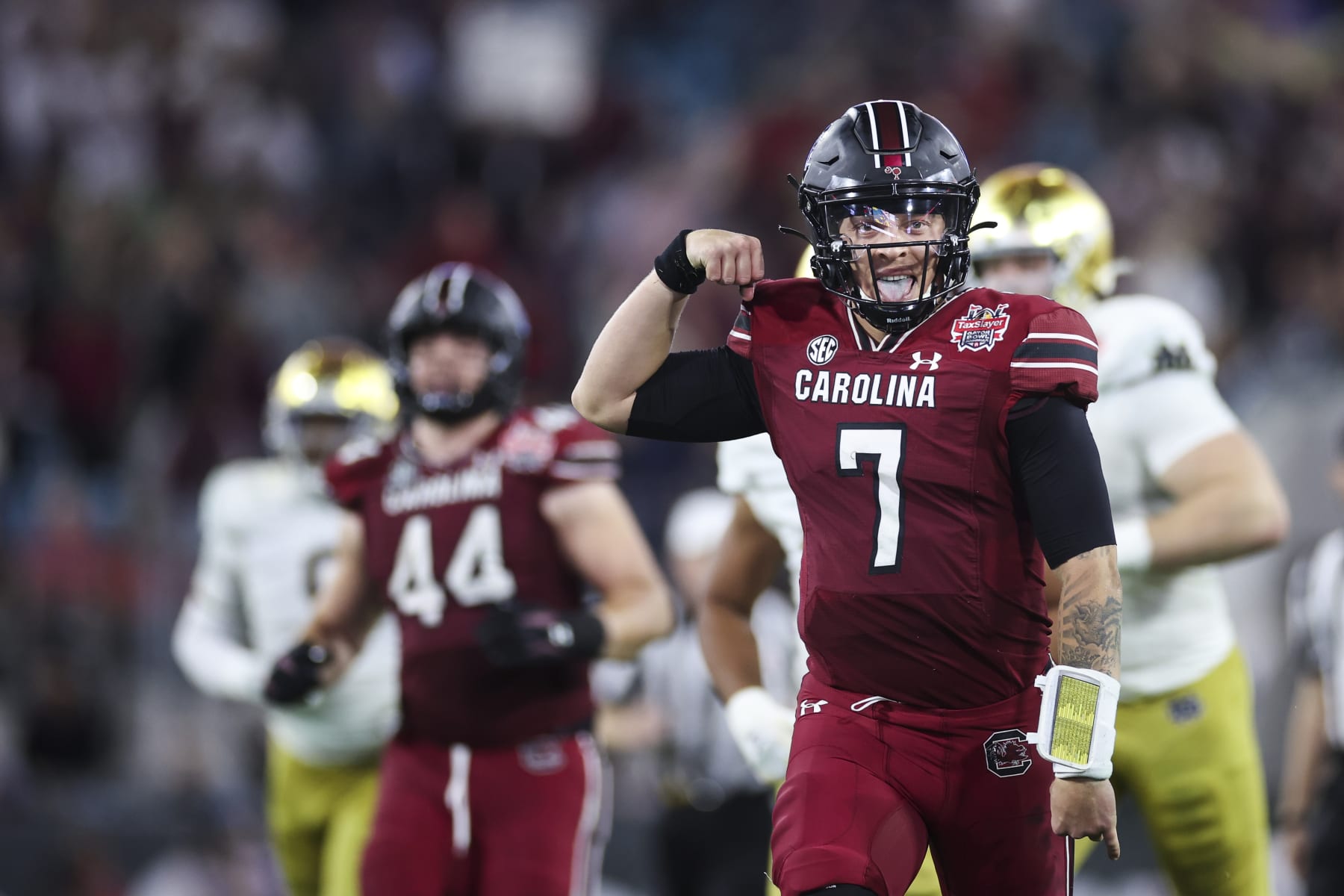
For my money, either Rattler or Nix are the best-of-the-rest quarterback whom teams should be targeting. I understand the appeal with Penix, particularly in a vertical offense, but it's less clear to me which bucket of Day 2 quarterback he falls into. Some of his obvious pitfalls are tough to square with my view of the position.
Deciding between Nix and Rattler is all about perspective and a given team's timeline.
Nix is the safer bet. The athleticism, accuracy and general risk-avoidance make Nix an easy projection. He will be able to play right away as a low-risk distributor who can throw to all three levels and occasionally make a cool play. Andy Dalton was exactly that for the Bengals, albeit the best version of that kind of player.
Rattler is the home run swing. His arm talent is a siren song. But even beyond the raw arm talent, Rattler's pro-style experience, pocket management and aggressive creativity all create the outline of a legitimately good NFL quarterback. He just needs a few years of stability and proper coaching to color in the rest of the picture.
If any of these three quarterbacks eventually develops into a top-eight NFL quarterback, it likely will be Rattler.
